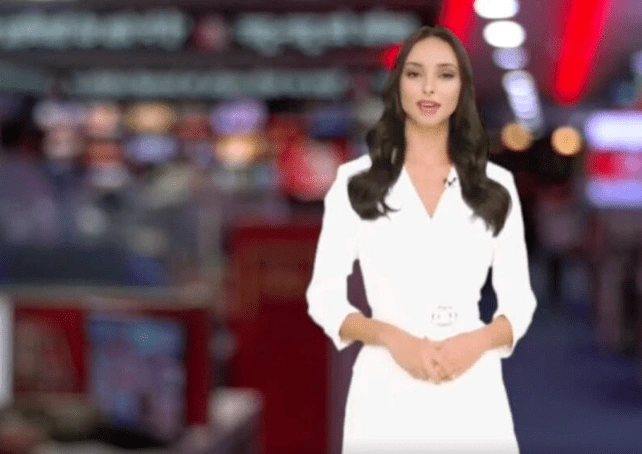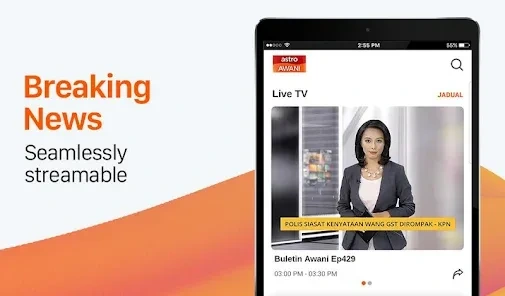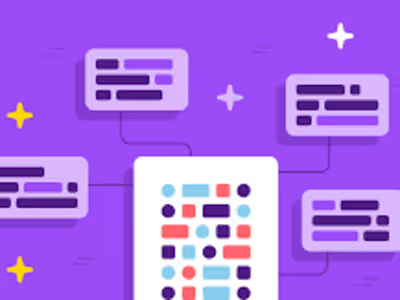AI News Anchors: Revolutionizing Global Broadcast Media
Ever caught yourself in a AI news anchors' hypnotic spell? Their perfectly enunciated words, the impeccable timing, and an endless supply of energy that seems almost too good to be human. That's because it isn't.
Imagine tuning into your favorite news channel late at night or early morning and finding a tireless anchor who never needs coffee breaks. Picture perfect delivery every single time - no stutters, no slips, just seamless transmission of information.
This is not science fiction; AI-powered newscasters are already transforming our screens around the world! From India to China to Kuwait, countries are harnessing this cutting-edge technology for faster reporting and lower production costs. But how does it work? And what can we expect next?
So, let's plunge into the world of journalism and artificial intelligence. We're exploring how digital twins are revolutionizing content creation.
The Emergence of AI News Anchors Globally
AI news anchors are revolutionizing the way we consume news. Countries around the world, from India to Kuwait, are leveraging artificial intelligence for a new breed of virtual presenters.
Adoption of AI News Anchors in Asia

In April, India introduced its first AI-powered news anchor, taking strides into digital journalism. The development comes after China made headlines by introducing the world's first AI news anchor back in 2018.
Other Asian nations have likewise adopted this advanced technology, such as Indonesia and Malaysia. For instance, Indonesia recently debuted three distinctive AI-presenting personalities - Nadira, Sasya, and Bhoomi - contributing significantly to their local media landscapes.
Middle East's First Virtual News Presenter
Kuwait didn't want to be left behind either. It ventured into uncharted territory with its debut virtual presenter marking an important milestone for broadcast organizations in the Middle East region.
So why is this shift towards using artificial intelligence happening? There’s more than one reason. With production costs being a significant concern for many broadcasters globally (including leading broadcast organizations), adopting technology that can help reduce these expenses makes practical sense.
Economic benefits: Utilizing an AI avatar reduces both upfront costs associated with hiring human anchors and ongoing operational expenses related to broadcasting TV shows or delivering breaking news stories – which often involve long hours and complex logistics planning efforts;
Tech advancements: Innovations within generative ai tech make it possible now more than ever before not only mimic human speech patterns but also generate lifelike facial expressions;
Availability: AI news anchors are always ready to deliver the latest updates, making them a reliable resource for broadcasting 24/7.
Malaysia's leading channels. Lisa isn't just a fancy animation; she's the result of integrating artificial intelligence into broadcast news, redefining how we understand and engage with current events.
The Role of Artificial Intelligence in Journalism
Artificial intelligence is transforming journalism and media workflows, making news production more efficient and cost-effective. It's not just about reducing repetitive work; it’s also opening new doors for creative work.
Streamlining Content Creation with Digital Twins
Digital twins - digital replicas of lead anchors - are revolutionizing content creation processes. With AI technology at the helm, creating engaging content has never been easier or faster. By using these virtual versions of their human counterparts, broadcast news organizations can streamline the creation process while maintaining high-quality standards.
This shift towards artificial intelligence in journalism isn't confined to a specific region either. Several channels in India have introduced their own AI-powered news presenters, indicating that this trend is gaining momentum globally.
Beyond time-saving benefits, these digital twins also offer financial advantages by significantly reducing news production costs – an aspect crucial for any media company aiming to stay competitive in today's fast-paced market environment.
Astro Awani, a leading broadcast channel based out of Malaysia has set precedence by successfully implementing AI avatars named Joon and Monica into its regular programming lineup thereby showcasing how artificial intelligence is transforming traditional roles within broadcasting TV stations around the world.
Few would deny that Astro Awani's approach seems like a glimpse into what might soon become standard practice across leading broadcast news organizations worldwide.
Emerging Roles & Opportunities with Generative AI
An exciting development within this space involves generative AI models being used as virtual newsreaders which not only deliver accurate information but do so efficiently without requiring breaks. This advancement makes them perfect for delivering breaking news around the clock.
China's state-run Xinhua News Agency was one of the pioneers in this domain, launching its first AI news anchor back in 2018. Since then, it has continued to refine and improve upon its virtual presenter technology to make sure it remains at the forefront of digital journalism.
The introduction of such technologies is also helping agencies deliver news on social media platforms more effectively. For instance, Lisa appeared as a virtual avatar on Astro Awani's Twitter account which led to increased engagement with younger audiences who predominantly consume their news via these channels.This creative approach truly exemplifies how AI anchors are not just mimicking human presenters but carving out unique roles for themselves within modern day broadcasting.
Evolving Audience Expectations
Key Takeaway:
Benefits Offered by AI News Anchors
These artificial intelligence-driven avatars are capable of delivering news round-the-clock, adapting to different languages and accents, and reducing production costs.
Fast Release of Breaking News
The most significant advantage is their ability to quickly deliver breaking news. Traditional broadcast methods often require a considerable amount of time for setup and coordination among various teams. In contrast, an AI anchor like Xinhua's, China's state-run news agency avatar, operates non-stop.
This means they're always ready to share urgent reports with viewers at any hour. And unlike their human counterparts who might need breaks or have off-days due to health reasons or personal commitments - these AI-powered figures never tire.
Easy Creation and Editing of News Videos
Beyond speed in delivering content, another benefit lies in simplifying video creation and editing processes. Utilizing generative AI technologies allows virtual presenters such as Astro Awani's Joon & Monica from Malaysia’s leading broadcast channel –– a feat achieved without the logistical challenges associated with managing physical sets or coordinating schedules across different team members.
A great example is MBN (Maeil Broadcasting Network) from South Korea where the main anchor also serves as an AI newscaster. This innovation significantly reduces production costs while providing flexibility on content presentation styles according to audience preferences.
Cutting Down Repetitive Work
AI news anchors also excel at repetitive tasks, reducing the burden on human staff. Tasks like presenting weather updates or stock market reports – often deemed monotonous and time-consuming by their human counterparts – can be handled efficiently by AI presenters.
This helps in freeing up valuable time for creative work that needs a more personalized touch from humans - think of opinion pieces or investigative journalism where empathy and nuanced understanding are essential.
Language Versatility & Personalization
Wrapping up, the ability to personalize content is another significant advantage. It's like icing on the cake.
Key Takeaway:
Case Studies on Successful Implementation of AI News Anchors
We're witnessing an era where AI news anchors are reshaping the landscape of journalism. Let's examine some real-world applications, starting with Taiwan's first-ever AI weather presenter and then moving to Malaysia, where a private news channel successfully introduced virtual avatars.
Taiwan's First AI Weather Presenter
Innovation has always been at the heart of FTV News in Taiwan. They made headlines by introducing their country’s first AI weather presenter using advanced AIGC technology. It was a breakthrough moment for generative AI application in broadcast news organizations.
The adoption didn't just create buzz but also added significant value to their content delivery system. This move allowed them to deliver accurate forecasts more quickly while reducing repetitive work associated with traditional methods of reporting weather conditions.
This innovative use case is not just about technological advancement; it goes beyond that by significantly cutting down production costs and enhancing viewer experience simultaneously - indeed an excellent example for other media companies worldwide.
Malaysian Channel Astro Awani's Virtual Avatars

Moving towards Southeast Asia, we have another exciting story from Malaysia’s leading broadcast news organization – Astro Awani. Their leap into artificial intelligence came through two charming characters named Joon and Monica – virtual avatars bringing life-like qualities into newscasting.
Joon & Monica weren’t created overnight though. The team behind this creative work dedicated hours towards perfecting these personalities which now help streamline news production process like never before. To give you a glimpse, they even gave 'Lisa', one of the ai-powered personas its own Twitter account, enabling Lisa to interact directly with the audience, thereby creating a more personalized experience.
The Astro Awani's AI anchors have managed to reduce news production costs significantly and bring a new dynamism into presenting news. Channel’s leader Jagi Mangat Panda hailed this move as 'the future of broadcasting'.
But there's more to it. This isn't just about saving money or getting a tech edge. For viewers, these avatars offer a fresh level of interaction. They make soaking up information much more engaging than ever before.
Key Takeaway:
The Future Scope for AI News Anchors
Advanced tech is bringing a major transformation to the manner in which news is reported. AI news anchors are at the forefront of this change, delivering accurate and timely updates to audiences worldwide.
The role of artificial intelligence in journalism isn't limited to just reading scripts. These digital avatars also have the potential to reduce production costs significantly by streamlining repetitive work such as video editing and script writing.
Pioneering A New Era In Broadcasting
Consider China's state-run Xinhua News Agency, which introduced the world's first AI-powered news anchor in 2018. Since then, more countries have jumped on board with their versions like India launching its own AI anchor Sana, Indonesia introducing three virtual presenters Nadira, Sasya, Bhoomi or Astro Awani’s Joon and Monica from Malaysia.
Apart from these examples of successful implementation across various leading broadcast organizations globally shows that an increasing number of channels are starting to see the benefits offered by using generative AI technologies in broadcasting TV news reports.
Beyond Presenting The News: Interactive And Personalized Experiences
We foresee future advancements allowing ai anchors not only deliver breaking stories but also interact with viewers through social media platforms. This level of engagement could provide personalized content based on user preferences - a feat beyond any human capability.
Digital Journalism On Steroids?
An interesting prospect lies ahead where private channels may use ai avatar for reducing news production costs and improving efficiency. However, this comes with its set of challenges as maintaining a personal touch is critical in broadcasting.
While AI avatars can give the illusion of human interaction, it's important to remember that they lack the emotions and nuanced understanding that a real-life news presenter brings to their role. The ability for an anchor to convey empathy or concern during distressing reports is something machines are yet able to mimic convincingly.
Global Reach With Local Flavour
The true power of AI anchors comes from their potential to consistently deliver high-quality content. Their capabilities can truly revolutionize the way we consume news and information.
Key Takeaway:
Challenges and Limitations with Using AI News Anchors
The use of AI in news production has been revolutionary, but it also presents a range of challenges. As is the case with most technologies, there are both advantages and limitations to using AI anchors.
Ethical Concerns in AI Reporting
One major issue revolves around ethics. The question arises: can an algorithm truly be impartial? In other words, will these AI news anchors, like their human counterparts, possess the ability to discern between biased and unbiased reporting?
Another concern is about privacy violations. For instance, digital journalism involves collecting vast amounts of data from various sources. But this could potentially infringe upon individual privacy rights if not managed properly.
Lack of Human Touch in Broadcasting TV
Broadcasting TV news isn't just about presenting facts; it also requires a personal touch which includes body language cues or tonal inflections that communicate empathy - something current generative AI technology lacks. While we've seen significant progress such as Xinhua News Agency's world-first AI anchor, replicating subtle nuances characteristic to humans remains a challenge.
The Quality Factor for News Organizations
A crucial aspect for leading broadcast news organizations worldwide is quality control – maintaining high standards while delivering news swiftly. With respect to accuracy or fact-checking capabilities at par with experienced journalists - currently virtual presenters might fall short despite being efficient at repetitive work such as reading out scripts or delivering pre-written news reports.
Cost Implications for News Production
AI avatars like Astro Awani's Joon and Monica, although successful, still require a significant upfront investment. Developing such AI-powered anchors involves high initial production costs due to the complex algorithms and computing power required.
So, it becomes a real challenge for smaller private news channels to jump on the technology bandwagon.
Comparison Between Human And AI News Anchors
The advent of artificial intelligence (AI) in journalism has sparked a debate between the charm of human news anchors and the efficiency of their AI counterparts. Let's dissect this by examining various factors like accuracy, personal touch, production costs, and more.
Accuracy: Humans vs AI
In terms of accuracy, both human and AI news anchors have their strengths. For instance, humans can interpret complex situations with nuance while delivering news. On the other hand, an AI anchor reduces errors due to fatigue or oversight - it never misses a fact from its script.
Is AI always right? Not necessarily. AIs are only as accurate as their programming allows them to be. This means if there's an error in data input or algorithmic design, inaccuracies may slip through.
A Personal Touch: Humans Shine Through
When we talk about establishing a connection with viewers during broadcasts - humans certainly take the cake over AI avatars. Human anchors possess inherent emotional intelligence which is difficult for machines to replicate despite advancements in generative AI technology.
An engaging presentation style combined with appropriate tonal changes can make all the difference when explaining complicated events; something current iterations of virtual presenters lack yet.
The Efficiency Quotient: The Rise Of The Machines?
Xinhua News Agency’s introduction, back in 2018 brought the world's first-ever 'AI presenter' into the limelight, setting off discussions on efficiency.
AI news anchors can work tirelessly, around the clock, and deliver news in real-time. This has made them particularly useful for breaking stories at odd hours or covering repetitive work like stock market updates without requiring breaks.
Cutting Down Production Costs: AI To The Rescue
Broadcasting TV shows often involve substantial costs - right from setting up a studio to paying human anchors. Here's where artificial intelligence steps in.
It's hard to give a comprehensive rewrite without knowing the content of your original text. Can you please provide the paragraph that needs reworking?
Key Takeaway:
The Impact of AI News Anchors on Broadcasting
These digital journalists, like China's state-run Xinhua News Agency's AI anchor, deliver news quickly and efficiently. They're revolutionizing how we consume media by reducing news production costs while delivering high-quality reports.
Transforming Global Newscasting
In recent years, global adoption of virtual presenters has skyrocketed. Countries from India to Kuwait have embraced this tech-savvy way to bring their audiences closer to the world's largest events. India Today Group’s Aaj Tak channel uses an AI presenter named Sana, who occasionally delivers bulletins with aplomb.
Taiwan introduced its first AI weather presenter using AIGC technology. Malaysia followed suit with Astro Awani's virtual avatars Joon and Monica captivating viewers' attention.
Revolutionizing Production Processes
The advent of generative AI tools has given rise to a new era in digital journalism: repetitive work such as creating and editing videos is now more manageable than ever before. This simplification leads not only to cost reductions but also enables faster delivery times for breaking stories worldwide.
Broadcast news organizations see a significant decrease in production costs thanks to these technological advancements—a win-win situation for both businesses and consumers alike.
Pioneering Ethical Standards In Journalism
AI-powered broadcasting isn't without challenges though. Concerns about authenticity arise when presenting pre-scripted or auto-generated content as live broadcasts—the question being if it diminishes trust in news agencies. But, like any innovation, AI anchors require careful handling to ensure they enhance rather than diminish the value of journalism.
AI news presenters are also subject to scrutiny regarding their 'realness'. Astro Awani's virtual avatars Joon and Monica were designed with an uncanny level of detail. This raises questions about viewers' perceptions and interactions with such digital entities.
Key Takeaway:
FAQs in Relation to Ai News Anchors
Who is the female anchor of AI news?
Sana, an AI-powered news anchor in India, is a notable example of a female AI news presenter.
Is AI news anchor a robot?
No, an AI news anchor isn't a robot. It's actually digital software that uses artificial intelligence to deliver the latest headlines and updates.
How does an AI news anchor work?
An AI News Anchor operates by using natural language processing and machine learning techniques to simulate human speech patterns and facial expressions.
Conclusion
The use of digital twins and AI technology is revolutionizing content creation while streamlining media workflows.
Benefits like fast release of breaking news and easy editing make these virtual presenters a game-changer in broadcasting. But it's not all rosy; ethical concerns persist, challenging this tech frontier.
Taiwan's first AI weather presenter or Astro Awani's avatars are shining examples today, but what about tomorrow? As we move forward, only time will tell how deep an impact these tireless broadcasters will have on our screens and lives!
Like this project
Posted Oct 14, 2023
Discover how AI-powered news anchors are transforming the global broadcast media industry. From real-time reporting to unbiased delivery.
Likes
0
Views
76





